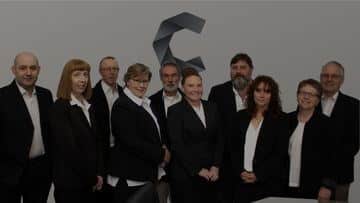Over the last five years in Australia, the number of SMSFs (self-managed superannuation funds) has grown by 27% and the latest figures show that there are almost 600,000 SMSFs managing $624 billion or 30% of all superannuation. The other 70% or $2.11 trillion is invested in professionally managed superannuation funds.
These funds are the default funds for compulsory superannuation contributions, with some performing better than others over the last ten years, but all having little involvement from their members other than to check their statement once a year. The alternative for the more aggressive investor who wants to have some control over where their money is placed is to set up their own self-managed super fund.
This can be difficult to do, and it is one of those processes where a wrong decision made in ignorance can have long-term implications for the size of any retirement nest-egg in the future. This is why it is best to leave the establishment phase in the hands of Carbon Group who are specialists in this area.
The Role of Superannuation in Australia
Superannuation in Australia is a vehicle for holding assets in a tax-friendly environment, so much of the interaction that takes place around setting up a new fund is between Carbon Group and the Australian Taxation Office (ATO). Getting the structure right at this point is essential to getting the best result as the sole purpose of your SMSF is to provide for your retirement.
There are many benefits to running your own SMSF, provided you understand that all members are trustees and, as such, have significant personal responsibilities for administration and compliance. You will also need a significant balance to open the fund for it to be worth the time and effort, as opposed to just leaving the money in a managed fund.
The Benefits and Challenges of SMSFs
The major benefit people are looking for in setting up an SMSF is to have control over how their money is invested. They may be unhappy with the performance of their managed fund and feel they could do just as well if not better themselves. They may feel the fees are excessive compared to the return but have no redress. As a trustee of your SMSF having this control, includes forming an investment strategy, deciding on the asset mix and managing the asset portfolio.
A further benefit is that you can potentially reduce the ongoing fees by being smart with the frequency of your transactions and keeping them to a minimum, and choosing your investments wisely. You also have the flexibility to sell fund assets at the most favourable time, taking advantage of income and capital gains tax concessions for superannuation assets in the accumulation phase.
The major disadvantages are the skills and time needed to manage your fund and discharge your responsibilities as trustee. You must keep records and meet reporting requirements as well as invest your assets according to your investment strategy.
Carbon Group’s Full Administrative Service
If you still believe an SMSF is the best option to plan for your retirement, Carbon Group also offers a full administrative service once the fund is established. With the superannuation rules and regulations constantly changing, having your fund administration carried out by professionals in the field will take a load off your shoulders and leave you free to concentrate on other things.





















